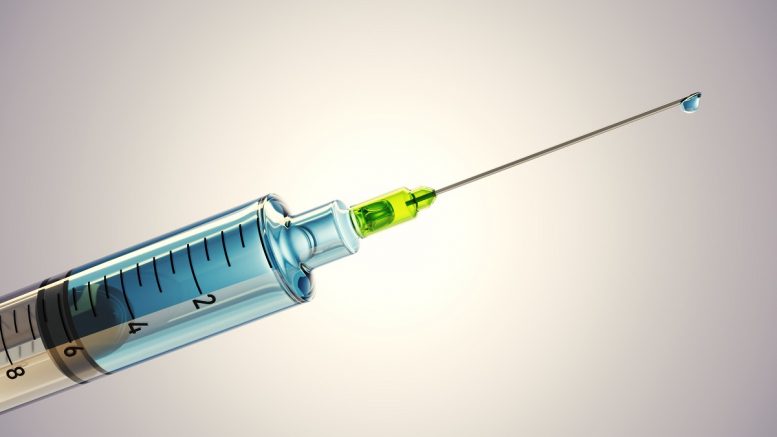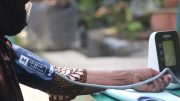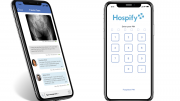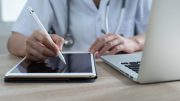Drug delivery has come a long way in the past few decades, with technological advancements, especially in mobile health, enabling new ways to deliver and manage patient medications. The first drug delivery systems were created to achieve greater control over how oral drugs circulated in the body, achieve more consistent release rates, and create less invasive technologies.
However, one area that has remained relatively unchanged is the administration of injectable therapies. Injections are one of the most common methods of drug delivery used to treat a wide range of conditions, including diabetes, cancer, and autoimmune diseases.
Low medication adherence is frequently responsible for the discordance between drug trial results and their real-world efficacy. This is particularly true for chronic illnesses, where approximately 50% of patients do not adhere to their medication regimen. Shockingly, an estimated 125,000 deaths each year in the United States are attributed to non-adherence.
Traditional needle injections are painful, stressful, and challenging to manage. As many as 2 in 3 children and 1 in 4 adults have a fear of needles, and 27% of children avoid needle treatments. Low tolerance levels to needle injections have real consequences for patient health and healthcare costs. With an in-home medication administration, there can be a 2-33% error rate. All of these hurdles add up to between $100 and $300 billion of avoidable healthcare costs in the United States annually. With 6 in 10 Americans living with a chronic disease, more hospitals and providers are leveraging telehealth to maintain or improve quality patient care.
But now, with the rise of telemedicine and mobile health technologies, the drug delivery industry is on the brink of a significant transformation. A combination of needle-free technology with a mobile drug delivery platform will simplify the treatment process. This will allow patients to overcome the barriers to treatment adherence, creating better healthcare outcomes.
By combining needleless technology with a mobile drug delivery platform, healthcare can become more equitable and accessible to all. Pairing technology with drug delivery methods will make it easier for people to get access to quality healthcare. Technology has the potential to provide quality in-home patient care while driving down avoidable healthcare costs in the United States. Additionally, a holistic drug delivery platform could decrease the in-home medication administration error rate, which has real consequences for patient health.
In-Home Health Trends
The COVID-19 pandemic has accelerated the trend toward in-home health and telemedicine. Because patients have come to expect that they can attend a doctor’s appointment from the comfort of their own homes and many individuals are unable to leave their homes due to chronic illness, telemedicine has become an essential tool for delivering care.
For those undergoing IVF, diabetes, allergies, gene therapies, or growth hormone deficiencies, self-injections can be challenging to administer at home without the assistance of a healthcare professional, leading to a high error rate for dosages. In-home medication administration error rates can be as high as 33%. This trend toward more advanced technology-driven solutions for in-home health is particularly encouraging for patients who require regular injections. Managing the whole self-injection process, from drug preparation and drug administration to treatment monitoring, can be complicated and stressful. With needle-free technology, medicine can be delivered using liquid pressure within 0.3 seconds to boost treatment efficacy. Hardware with an external motor design makes it possible for automatic medicine drawing with air-expelling technology to simplify treatment self-administration. Additionally, vertical alignment and safety locks prevent the medication from leaking and can minimize the pain associated with injections.
Patients living in rural areas or with mobility issues may find it difficult to travel to a clinic or hospital for treatment. In-home health solutions can bridge this gap, allowing patients to receive the care they need from the comfort of their own homes. By connecting needle-less technology to a smartphone app, patients can receive reminders, monitor treatment progress, visual treatment calendars, and streamline communication between patient and physician to maximize remote healthcare adherence and prevent complications. These technologies allow doctors and healthcare professionals to monitor patients’ health from afar, reducing the need for in-person visits and improving the overall patient experience.
Better Medication Efficacy and User Clinical Outcome
A primary reason why people do not adhere to their treatment regimen is the perceived lack of efficacy, which can lead to low motivation. This means that some individuals may stop taking their medication because they don’t believe it will work or they don’t see any improvement in their systems. However, recent advancements in needle-free drug delivery technology have the potential to change this situation. By making the process of taking medication easier and less invasive, individuals may be more likely to stick to their prescribed medication schedules. This improved adherence can, in turn, lead to better treatment outcomes, which can help individuals feel better and reinforce their motivation to continue taking their medication.
One of the significant benefits of pairing needle-less technology with drug delivery methods is the potential to improve patient clinical outcomes. Needleless drug delivery technology platforms have the potential to reduce pain and discomfort for patients. Telosis, the needle-free technology that delivers medication, uses liquid pressure to make the process painless and ensure medication is administered correctly. By eliminating the need for traditional needles, patients can avoid the anxiety and pain associated with injections. Traditional needle injections are not reusable and can generate a significant amount of waste. Additionally, needleless injection technology can be reusable, reducing waste and lowering patient costs through a reusable device that can be used more than 6,000 times. Needle-free technology improves patient health outcomes by removing the barrier of discomfort that discourages patients from receiving care.
Integrating needle-free hardware with a mobile healthcare app allows for more accurate and simplified medication delivery. Data uploaded by the patient’s healthcare provider dictates the medication dosage and reminds the patient of their treatment schedule so mistakes are reduced, and the patient can focus on being healthy. It also allows patients to administer medication in the comfort of their own homes without having to travel to a clinic or hospital for treatment. The mobile app improves patient health outcomes by providing a line of communication to their healthcare providers from home, giving doctors the opportunity to provide a better experience for patients.
Needleless Technology and Longitudinal Decentralized In-Home Monitoring Data
Another advantage of in-home health solutions is the collection of longitudinal monitoring data. This data can be used to track patient progress over time, allowing doctors to make more informed decisions about treatment. Mobile apps can enable patients to track their medication schedules and dosages and communicate with their doctors in real time. Remote medication and self-administration monitoring platforms provide an easy and painless alternative for at-home drug delivery by simplifying the process for those undergoing IVF, diabetes, allergies, gene therapies, or growth hormone deficiencies. This direct communication between patients and doctors can lead to better clinical outcomes and a more personalized approach to treatment.
The future of drug delivery is bright, with telemedicine and mobile health technologies poised to revolutionize the industry. With the rise of in-home health trends, patients can now receive the care they need from the comfort of their own homes. By pairing technology with needleless drug delivery methods, NovaXS drives innovation and improves the patient experience. The needle-free drug delivery platform can eliminate patient pain and discomfort, reduce waste, and improve clinical outcomes through the collection of data. With a sustainable platform that has a reusable needle that can be used up to 3,000 times, NovaXS is the most cost efficiency needleless injection technology platform. As the healthcare industry continues to evolve, more innovations in drug delivery will make healthcare more accessible.
About the Author
Alina Su, CEO and Founder of NovaXS, is an innovator, passionate about creating technology that makes healthcare equal and accessible to all. An entrepreneur and inventor, Alina holds six medical device patents in China and the USA and is a Ph.D. student studying Biological and Biomedical Science at Harvard Medical School. After witnessing first-hand the pain her younger sister endured undergoing needle injections to treat a growth hormone deficiency, Alina founded NovaXS, BioTech Corp., a smart medical device company focused on developing an in-home and needleless drug delivery technology. NovaXS’ investors include Baxter International and Edward-Elmhurst Health.





